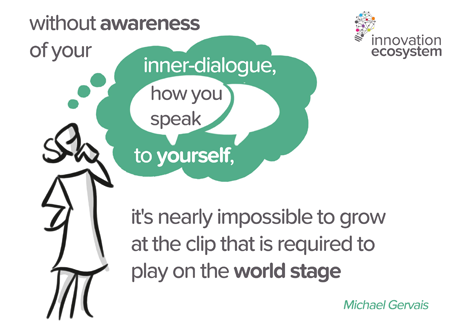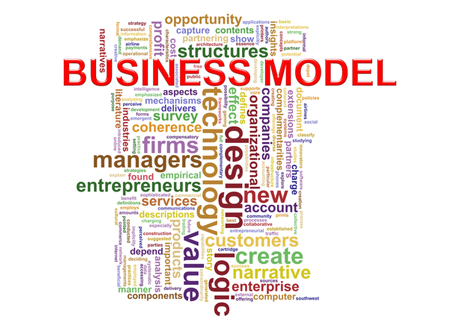The Six Pillars of Innovation Culture
Every year, IdeaScale asks our customers what their main priorities are for the coming year, and without fail one of the top two priorities is to create a culture of innovation. Every innovation thought leader, every organizational engagement specialist, every pundit or leader in transformation says that this is the secret to avoiding disruption.
Innovation Programs & Entrepreneurship: Busting Myths
A lot of companies aspire to implement successful innovation programs but the programs fail surrounded by certain myths. A seasoned entrepreneur has bust those myths in the article based on his personal experience.
Taking an Audience-Centric Approach During the Tech Adoption Lifecycle
Most marketing professionals understand that insight into the hearts and minds of your customers is central to successful product innovation. But which customers? Who is going to buy my product first? What happens after that? How can I eventually grow my customer base to one billion people?
Why it Takes Time to be an Overnight Success
When it comes to transformation programs, internal alignment forms the foundation for strategic success. Naturally, aligning an organisation to its strategic priorities requires serious upfront investment in terms of time. But without this time, it’s a case of ‘fail to prepare – prepare to fail’.
The Space Between Hesitation and Commitment with Michael Gervais
Michael Gervais is a high-performance psychologist who works in the trenches of high-stakes environments, he is a recognized speaker on optimal human performance, and he is the host of the Finding Mastery podcast. What can Michael teach us about success in the corporate world? Well, just a few of the important topics Mark and Michael discuss on this week’s episode are: Why is an understanding of the space between hesitation and commitment so fundamental to raising performance? What is micro-choking, and how can you dissolve pressure? A definition of failure that challenges us to step up.
Leap Innovation: a Strategy to Get Ahead and Stay Relevant
The importance of innovation for organizations to remain competitive is widely discussed and well accepted by scholars and practicing managers. However, failures in innovation attempts are quite common and raise many questions. Why do firms with innovative products fail? Does market acceptance of innovations alone guarantee continuous success? Is it innovation strategy that can ensure long-term prosperity? One can argue that it is not only how to innovate that matters, but also where, what and when to innovate that make the difference.
High Stakes Industrial Innovation with Paul Brody
Paul Brody is a Global Innovation Leader in BlockChain Technology and a Solution Leader in the Industrial Internet of Things at EY. Paul has spent more than 15 years in the electronics industry and has done extensive research for his clients on technology strategy. Paul understands that technology is deeply rooted in strategy, but it gets complex as new technologies and disruptions arise in our modern world. For example, the moment self-driving cars are perfected, it will cause a huge disruption in our economy, so how can we navigate through it?
The Science of Innovation with Amantha Imber
Amantha Imber is the Founder of Inventium, a company that uses science-based innovation to help organizations unlock their growth. Amantha has worked with some of the biggest names in the industry such as Coca-Cola and Disney, and is the author of The Creativity Formula: 50 Scientifically-proven Creativity Boosters for Work and for Life. On this episode, Amantha discusses how to encourage a risk-taking company culture that isn’t afraid to fail in the name of innovation, as well as what she personally looks for in a new hire.
Avoid Innovation Paralysis – Why all Companies Can and Must Embrace Change
Someone once told me this: “Innovation is like an apparition of the Virgin Mary: one person saw her, but everyone talks about it.” Although funny, the quote aptly captures an attitude towards innovation that exists in many companies today. Innovation – and the skills that enable it – are sometimes considered as mystical gifts, preserved for the chosen few. In other cases, innovation is feared, because it involves unregulated processes, risk taking and investments with unpredictable outcomes. In this blog post, I’d like to make a case against this kind of innovation paralysis. Every company must innovate, and with the right understanding of the word ‘innovation’, every company can.
Why Innovation Fails (And How to Succeed)
Here’s a wild guess: the majority of large enterprises will probably claim they know exactly what innovation is all about. Yet, in spite of impressive resources, big companies are responsible for only a small fraction of disruptive innovations. What is at the root of this paradox? Why does so much innovation fail? And more importantly: what can companies do about it?
How to Turn a Failure into a Wild Success
After six months of hard work, we were sitting together on a warm spring afternoon enjoying a beer in one of Melbourne’s new hipster bars. We had learned a lot, traveled all over Australia and met amazingly passionate people. We’d put together a lean startup with a focus to test a simple business idea and we’d heard countless times how much our tools were needed. There was only one problem. We had failed.
Clear the Mystery Around Innovation Crowdsourcing: Learn from the Pros
So you’re thinking of tapping your employees or customers for ideas. You’ve read some exciting crowdsourcing case studies and it seems like a no brainer. Or you’ve used a consultant but now want to go it alone? What could possibly go wrong? If you’re like a lot of first timers, you’ll get the software all set up, announce the challenge, and sit back with great expectations!
10 Ways to Reduce the Innovation Failure Rate
You are not able to stand still in this fast paced business environment, but most of the time innovation fails. Innovation process-expert Robert Cooper shows that of every seven new product/service projects, about four enter development, 1.5 are launched, and only one succeeds. Innovation is so difficult to master, indeed. I love to share with you five reasons why innovation goes wrong and give you ten ways to reduce your failure rate of innovation.
The True Value of Your Ideas
The mantra of ideas being worthless can be heard from all corners of the globe. Venture capitalists back founders and not ideas. In 2009, the entrepreneur and author Seth Godin got the nine of his alternate MBA students to come up with 111 ideas each to create 999 business concepts (Godin 2009). The point? To prove that “Ideas are a dime a dozen. The money is in the execution.” But is this correct? Your gut feeling demands that your best insights are worth more than nothing, right? Right.
5 Management Mistakes You Don’t Realize You’re Making
The dictionary defines management as, “the process of dealing with or controlling things or people.” Sometimes, managers don’t understand why their team does not function cohesively. Below are five management mistakes managers don’t realize they’re making and tips to avoid these missteps.
Don’t Be Afraid of Upsetting People – A Negative Reaction is Better than no Reaction
South Park is a highly successful cartoon sitcom created by Trey Parker and Matt Stone for the Comedy Central TV network. The show was launched in 1997 and quickly became notorious for its rude language, minimalist characters and black, surreal satire. It was aimed at an adult audience and poked fun at a wide range of topical or taboo subjects. South Park has received many accolades, including five Primetime Emmy Awards. It is the third longest-running cartoon series in the U.S. behind The Simpsons and Arthur. Yet it was very nearly cancelled when initial tests showed that most people did not like it.
5 Steps to Embed Innovation in Your Daily Working Life
Innovation is a word that’s been heard on the lips of more CEOs, read in more broadsheet papers, and detailed in more business magazines in the last ten months than ever before. It’s well regarded that those businesses that fail to innovate risk death; consider the sad fates of longstanding companies like Woolworths, Polaroid, Blockbuster, and Borders over the last ten years. But how, as an individual, can you incorporate innovation and creative thinking into your everyday working life, all while keeping up with the already manic pace of modern business?
Innovation Incubators and Accelerators: What Happens When They Go Wrong?
I recently wrote an article that outlined a new approach to developing and supporting successful innovation incubators and accelerators within corporate organizations. The article appeared to have touched a nerve as I had a number of people reach out to me to offer their experiences with incubators/accelerators. While I received a range of opinions, I was actually most interested in the stories of failure.
10 Guidelines for Business Model Innovation in Established Companies
Leading CEOs worldwide expect major changes to their company’s business model until 2020. As a consequence, organizations are currently about to realize that, today, business model innovation has become as important as technological innovation. However, developing new and viable business models still represents a serious challenge for large incumbent firms despite their resources, know-how, and key technologies. This article provides 10 guidelines for mastering business model innovation challenges in established companies.
The Boom – Not Doom – from Market Failure
What do non-consumption, organizational friction and market failure have in common? These days, everyone is “innovating” to find the next big thing. But where do you start? One way is to try and think of innovation as having mass, and therefore it cannot be created from truly nothing. Innovation must start somewhere, and it must start with something that already exists.
Taking Action: Your Innovation Master Plan
The focus of the The Innovation Formula is on the innovation process that makes sense for small businesses, where lean, simple, and fast are essential. You may also be interested in a view of the innovation process that’s suited to larger companies, so this chapter provides an overview of the Innovation Master Plan framework that we use when we’re working with larger organizations on innovation projects and initiatives.
Systematizing Breakthrough Innovation: Study Results
Most companies recognize the need for breakthrough innovation – it can change the fundamental bases of competition, “rewrite the rules” of an industry and transform the prospects of the successful innovator. There is no one-size-fits-all model for how best to respond to this challenge. Arthur D. Little surveyed over 80 large organizations to explore how to deliver a consistent pipeline of radically new products, performance features, business models and market space.
If You Want To Be a Good Leader, Be a Good Learner
As you, the leader/entrepreneur, embark on the pursuit of innovation, there are a handful of your personal skills and talents that will contribute enormously to the success and joyfulness of your journey. These skills are of course not just specific to innovation, and as a successful business person you probably already have well-developed capabilities in many of these areas. Nevertheless, it’s well worth spending a few minutes to review the key abilities where your refined skill set will result in enormous benefits.
Full Team Engagement in the Innovation Culture
The possibility of innovation is born when people transcend the beliefs that limit their thinking, and engage in the search for new and better ways. When people are doing this consistently and throughout your organization, you will see a pattern begin to emerge which you will discover is the dawning of the innovation culture.
4 Tricks to Building a Successful Open Innovation Program
One of the most critical professional challenges that employees face today is being able to successfully manage positive change within their organization. Innovation has become a watch word, with so many divisions not being able to find enough valuable ideas and then successfully manage those ideas into a commercial offering that sometimes companies even respond to customer tickets and bugs and simply label those results as “innovation.”
Speed of Innovation – How to Master Rapid Prototyping
In the disciplined and structured process of innovation we search for unmet needs and unfulfilled desires, and when we think we find them we have to construct a sort of a mental map that defines why our proposed solution will be better than whatever currently exists. We may use the business model map to show how we’re using this innovation to move up and to the right, or we may use the customer value ladder to show how this innovation provides differentiated value. And once we’re convinced that our idea is a really good one, the next step is often prototyping.
Germany’s Innovation Jam
Is Germany loosing the connection to today’s speed of change? In his new book “Germany’s Innovation Jam – How we create a new generation of founders,” Author Jürgen Stäudtner looks at German innovation pitfalls and corresponding resolutions.
Innovation Stakeholder Management: Gain Success From My Failure
In the second article on innovation stakeholder management, Anthony Ferrier focuses on two examples where he tried to generate broad support for innovation efforts with varying degrees of success. The lessons learned from these experiences provide insights for practitioners to successfully navigate stakeholder relations.



















